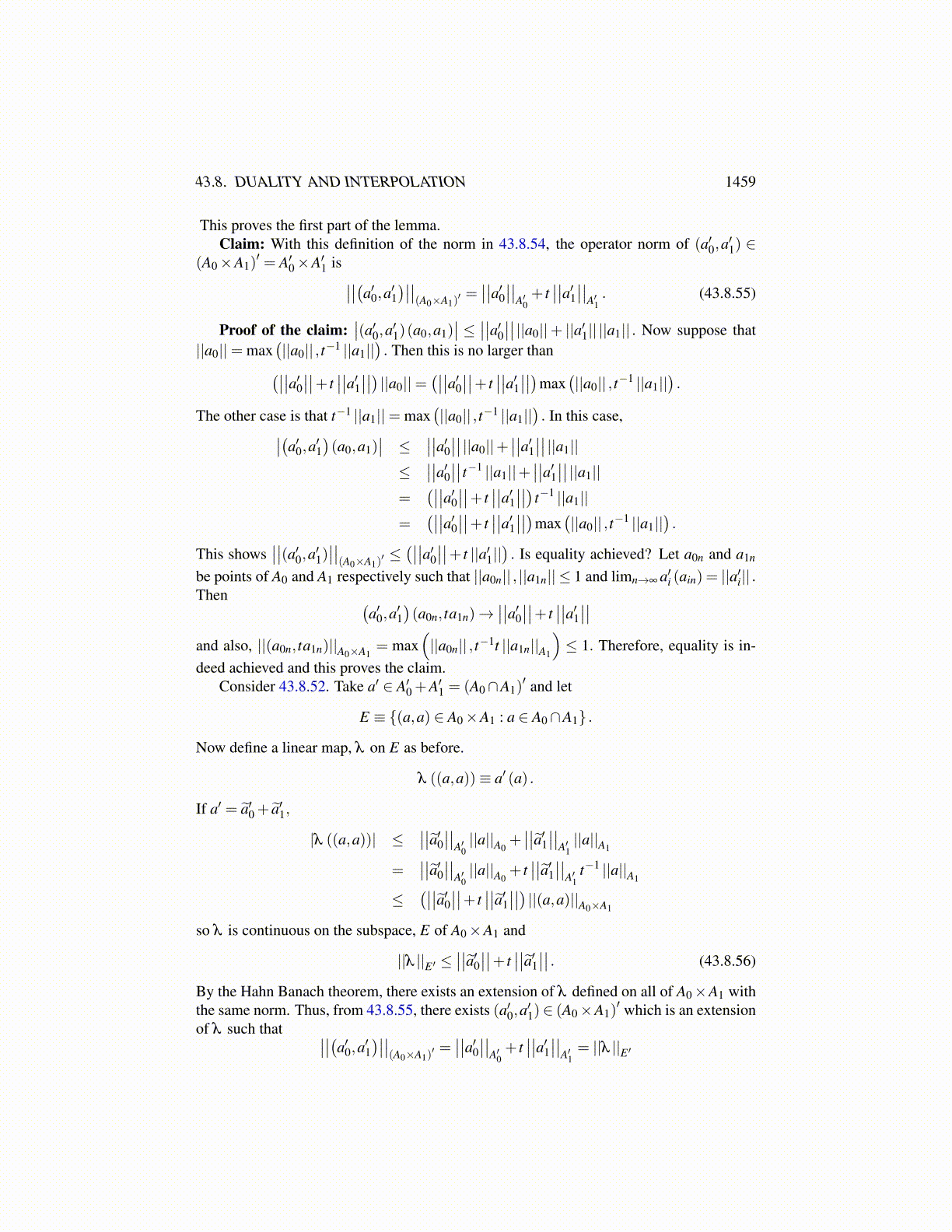
43.8. DUALITY AND INTERPOLATION 1459
where the equation follows from a change of variable. From Minkowski’s inequality and43.7.50,
||a||θ ,q ≡
(∫∞
0
(t−θ K (t,a)
)q dtt
)1/q
≤(∫
∞
0
(t−θ
∫∞
0min
(1,
1s
)J (ts,u(ts))
dss
)q dtt
)1/q
≤∫
∞
0
(∫∞
0
(t−θ min
(1,
1s
)J (ts,u(ts))
)q dtt
)1/q dss.
Now change the variable in the inside integral to obtain, letting t = τs,
≤∫
∞
0min
(1,
1s
)(∫∞
0
(t−θ J (ts,u(ts))
)q dtt
)1/q dss
=∫
∞
0min
(1,
1s
)sθ ds
s
(∫∞
0
(τ−θ J (τ,u(τ))
)q dτ
τ
)1/q
=
(1
(1−θ)θ
)(∫∞
0
(τ−θ J (τ,u(τ))
)q dτ
τ
)1/q
.
This has shown that
||a||θ ,q ≤
(1
(1−θ)θ
)(∫∞
0
(τ−θ J (τ,u(τ))
)q dτ
τ
)1/q
< ∞
for all u satisfying 43.7.47 and 43.7.48. Therefore, taking the infimum it follows a ∈(A0,A1)θ ,q and
||a||θ ,q ≤
(1
(1−θ)θ
)||a||
θ ,q,J .
This proves the theorem.
43.8 Duality And InterpolationIn this section it will be assumed that A0∩A1 is dense in Ai for i = 0,1. This is done so thatA′i ⊆ (A0∩A1)
′ and the inclusion map is continuous. Thus it makes sense to add somethingin A′0 to something in A′1.
What is the dual space of (A0,A1)θ ,q? The answer is based on the following lemma,
[16]. Remember thatJ (t,a) = max
(||a||A0
, t ||a||A1
)and this is a norm on A0∩A1 and
K (t,a) = inf{||a0||A0
+ t ||a1||A1: a = a0 +a1
}.